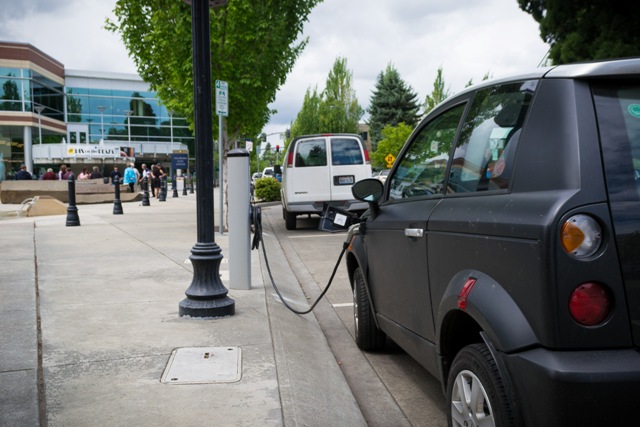Electric vehicles are now becoming more common place on our roadways. Their ability to travel longer distances without running out of power has now made them more practical for the everyday consumer. While the traditional gas powered motor will remain the number one type of vehicle for many years to come, we are in a period of migration from this type of technology.
The fact is that these types of cars are still made from the same limited resources as their predecessors and their carbon footprint remains to have a negative impact on our environment.
Precious Metals to Make Them
When you take into account how any vehicle is manufactured you will realize the amount of resources that are used to create them in the large numbers for our population. In order to maintain safety and durability the outer body and frame of an electric car is made from the same metals as any other type of vehicle. Not only are these metals a limited resource, but machining them and molding them to create a vehicle is a process upon its own.
Creating a stable from for the body to rest on is a necessity when it comes to manufacturing a product that can withstand the forces that will be placed on them. Aluminum, steel, and other alloys will not be infinitely available to humans and we are depleting them rapidly. Mining for these metals has a negative impact on the surrounding environment and continues to alter our ecosystem.
This affects geology, local wildlife, and weather patterns on a global scale. Unless we come up with a way to manufacture our inventions with a zero impact to the environment, time is working against us in our endeavor to protect the planet we live on.
Power Generation from Coal
Electricity is neither a cheap nor a self-creating resource for humans to take advantage of. The most negative impact is the burning of fossil fuels to create our high demand for electricity. Large power plants are burning coal every single day to create electricity for our everyday use. This is no different when it comes to powering an electric vehicle.
In order to achieve the amount of power an electric car needs for everyday use has a large negative impact on our environment. Yes they don’t put out carbon exhaust like a traditional gas powered engine, but take into account how the electricity in generated to not only powers the vehicle but to build it as well.
When you understand the amount of fossil fuels that are used for this purpose, the lesser carbon footprint achieved by the use of an electric vehicle almost becomes negligible! So how much are we actually saving our environment from carbon emissions when the same process goes into making the car, as well as creating its power?
Lithium
Electric cars use lithium batteries to store the charge they need to power its motor. Lithium is not a renewable material, and is being used exponentially more than it ever has in the past. One could argue that all we are achieving with the use of electric vehicles is moving from one limited resource to another. The high demand for lithium will force us to be more aggressive in obtaining it, and in the process harming our ecosystem.
This article doesn’t even get into the amount of oil that is used for plastics and rubber to build a vehicle which is an argument worth its own discussion.
Rebecca Borchers is a UCF transfer from FIU. She is orginally from Southampton, UK and is a hospitality major whos looking into event management. She is a world traveler who has a passion for volunteering and loves her dachshund. Rebecca is also a creative writer for TimsGermanAuto.com.



